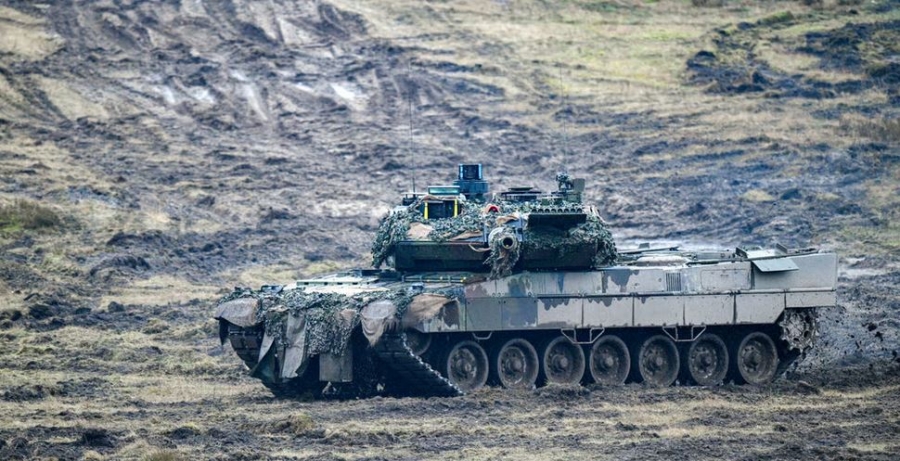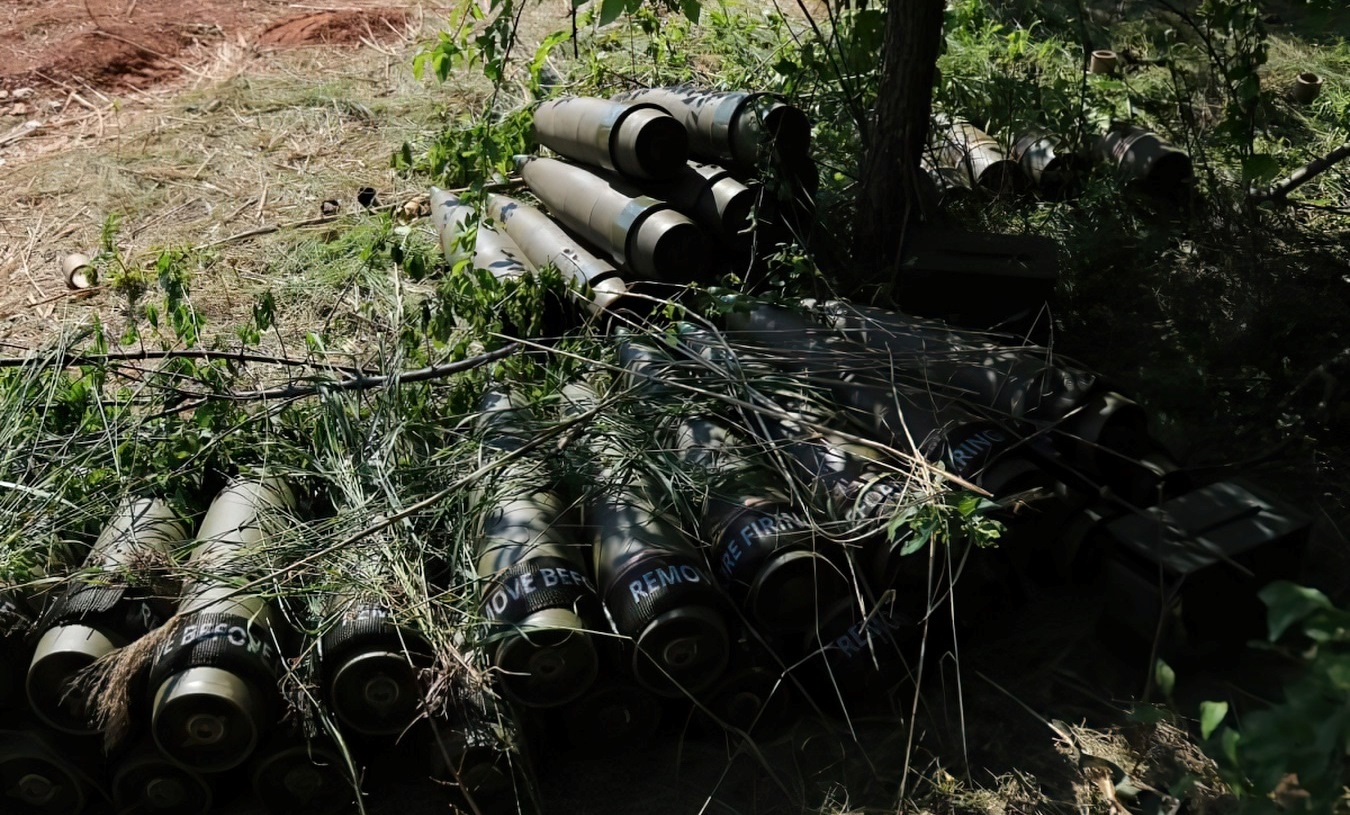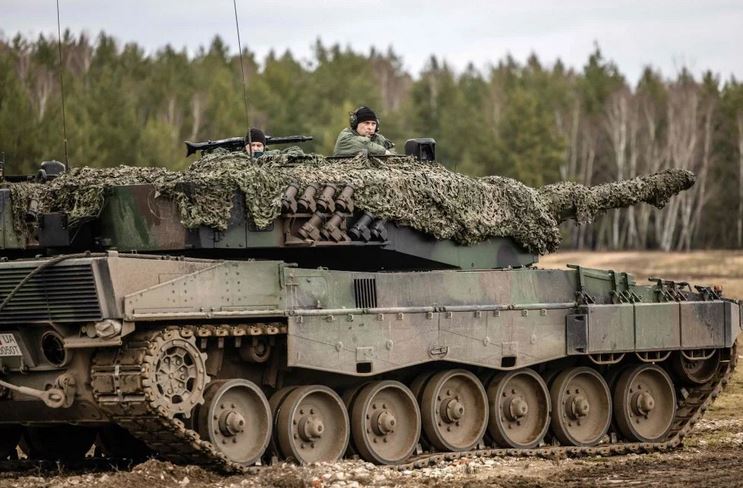
The Ukrainian counterattack does not start with the best of omen, but everyone expects that at some point it will become a reality.
(updated) April is drawing to a close, and many are beginning to wonder what is holding up Ukraine’s long-awaited spring counteroffensive, as the Russian military strengthens its defenses in Ukraine’s occupied territories.
According to Wagner’s founder,Yevgeny Prigozhin, It is unlikely that the Ukrainian army would launch an offensive in the muddy conditions that make the fields impassable and unpaved.
He couldn’t launch an attack at this time for quite understandable reasons.
Even trucks could not move freely in this area, let alone heavy vehicles and tanks.
It will take about ten days for the soil to dry out.” Reported the press service of Prigozhin.
When will they attack? They will probably decide for themselves. Don’t tell me about it.
But the truth is that they will begin their attack.
And for this we must be 100% ready to not repeat what happened in 1941.
Is it mud or…something else
This assessment has been corroborated, to some extent, by the British Ministry of Defense (MoD), which said in its latest intelligence briefing that heavy mud is slowing operations for both sides of the Russo-Ukrainian war, while noting that the Russian media may be exaggerating. Its impact on the Ukrainian forces as part of the information war.
Surface conditions are expected to improve in the coming weeks.
The threat of mines is probably the single most significant factor limiting fighters’ ability to maneuver off-road,” the UK Foreign Office further stated.
However, it is not necessarily muddy conditions in Ukraine, Rather, it is the lack of ammunition and weapons that seems to prevent Kiev from committing its armed forces to a counterattack.
column #Fahad 2A4 tanks and #American M113 armored personnel carriers are crawling through the mud somewhere # Ukraine. pic.twitter.com/ysijtiFDSp
– Arthur Morgan (@ArthurM40330824) April 22, 2023
According to the EurAsian Times, the Ukrainian military leadership appeared to be saving shells for next spring’s offensive, frustrating the Ukrainian forces fighting in Bakhmut, who revealed their plight due to a lack of ammunition.
Also, senior Ukrainian officials, including President Volodymyr Zelensky, have said they will not launch another major military offensive against Russian-controlled areas without more weapons from the United States and the West.
“We are waiting for the ammunition to arrive from our partners,” Zelensky said in an interview with the Japanese newspaper Yomiuri Shimbun in late March.
When asked about the expected counterattack, he said: “We cannot start yet. We cannot send our brave soldiers to the front line without tanks, artillery and long-range missiles.”
Kiev frustrated by ‘inadequate’ arms supply
Senior Ukrainian officials were frustrated by the slow delivery of weapons and ammunition from the West. For example, Ukrainian Foreign Minister Dmytro Kuleba criticized EU partners for failing to deliver a major new ammunition supply program that promised 1 million artillery shells to Kiev.
“It is disappointing that the European Union has not been able to implement its decision on the joint supply of ammunition to Ukraine,” Kuleba wrote on Twitter on April 20.
This is a test of whether the EU has strategic autonomy in making critical new security decisions.
For Ukraine, the cost of inaction is measured in human lives.”
Kuleba’s remarks prompted a phone call the next day with EU foreign policy chief Josep Borrell, who pledged that the bloc would “do everything possible to deliver the equipment quickly”.
The European Union reached a political agreement on March 20 on a plan to use 1 billion euros from the European Peace Fund to immediately supply Ukraine with ammunition from stocks available to European militaries and another 1 billion euros for joint supply of missiles.
While the first stage, which is to facilitate the supply of ammunition to Ukraine from the reserves of the European armies, is already being implemented, the second stage is said to be involved in a dispute, mainly between France and Poland, over an asset in order to produce artillery rockets.
With some support from Greece and Cyprus, France argues that the money should remain within the EU and that the supply chain for ammunition production should be entirely European, including the supply of key components needed to make artillery shells.
However, Europe’s defense industry may not be able to deliver a million shells to Ukraine within a year, according to an unnamed European diplomat cited by Politico. Therefore, countries from Northern and Eastern Europe argue that priority should be given to speeding up the delivery of artillery shells to Ukraine.
According to recent reports, Sweden, which holds the EU’s rotating presidency, has stepped in to find a compromise.
Swedish officials have reportedly drafted a settlement document limiting upcoming contracts to “economic operators incorporated in the Union and Norway” and specified that the directive should not set a precedent.
It appears that the new text is currently under discussion among EU members, after an EU official announced on April 22 that the point of a joint order to produce 155 mm shells, requested by Ukraine, is “now under discussion” and “a solution appears to be very close”.
Ukraine expects to receive the US M1 Abrams main battle tank within a few weeks after the arrival of the German Panthers.
However, there is concern among senior Ukrainian officials in Kiev that this is too late.
US Secretary of Defense Lloyd Austin said on April 21 that the US will begin training Ukrainian forces on how to use and maintain Abrams tanks in the coming weeks, while trying to get them into the battlefield as soon as possible.
The intractable problem with leopards
Thirty-one Abrams tanks are expected to arrive at the Grafenauer training ground in Germany at the end of May, and after a few weeks, Ukrainian forces will start training with them, which will last for about ten weeks.
Also, these tanks will not be the ones used by Ukrainian forces in the war against Russia, instead, 31 M1A1 tanks are being modernized in the US and will be sent to the battlefield as soon as they are ready, which will take… Months.
As for the Leopard tanks arriving in Ukraine, they also come with their own problems.
Ukraine receives 71 Leopard 2s from eight different countrieswhich however fires different types of projectiles A unique problem for the Ukrainians.
Kiev cannot purchase ammunition for Leopard 2s, and delivery schedules for them may vary, which may hinder the deployment of these tanks on the battlefield.
Military analysts also point out that 71 Leopard II and 31 M-1 tanks constitute only a hundred tanks for an army that requires more than a thousand tanks to equip its armored brigades.
However, it is important to note that Ukraine also receives other types of Soviet tanks.
Does the panic of the Russians sound like this?
Dragon’s Teeth fortification in the Zaporizhzhya region along the Mariupol-Crimea highway.
Suddenly, “Russia is here forever” is no longer so catchy… pic.twitter.com/jELGs2knf9
– Neil Hooker?? ї? (@NeilHawker2) March 13, 2023
The Russians are strengthening their positions
The concern in the corridors of Kiev is that as weapons and ammunition continue to wait, the Russian army in occupied areas of Ukraine is consolidating its positions, making it difficult for Ukrainian forces to retake those areas.
For example, in Berdyansk, on the northern coast of the Sea of Azov, the Russians are fortifying the airfield with trenches and pyramidal anti-tank barriers called “Dragon’s Teeth”.
Apart from this, the Russian forces also started digging defensive fortifications in the Crimea.
Similar fortifications were also seen in areas of southern Zaporizhia which were believed to be among the most likely areas where the long-awaited Ukrainian counter-offensive could be launched.
Wave and Wagner attacks
The Russian military has also proven adaptable on the battlefield, noted military experts such as Mick Ryan, a retired Australian Army general.
According to him, Ukraine had successfully targeted Russia’s logistical and rear areas in the first weeks of the war due to “bad” close combat tactics.
However, the Russian army has made changes.
“Rather than being more maneuverable, it has adopted a very destructive model,” Ryan said, referring to the increased intensity of Russian artillery strikes directed by unmanned aerial vehicles to proceed slowly but more carefully to avoid detection of expensive weaponry.
In addition, he referred to the recruitment of convicted criminals by Russia’s private military company Wagner, which he described as “a return to the human wave attacks seen in conflicts such as the Iran-Iraq War” but in a more “sophisticated” way.
He added, “It’s a more complex adaptation of tactics where the initial human waves are only the first level among many, each successive rank comprising more experienced and capable soldiers.”
“Each successive wave will yield small gains and eventually the better trained and more experienced Wagner’s forces They will take advantage of whatever gains these human wave attacks will make.”
There has also been a development in the Russian tactic of providing air support to ground forces, which has proven very effective, Ukrainian Air Force officials grudgingly acknowledge.
The Russians also began using long-range weapons such as the FAB-500 and UPAB-1500B 1.5-ton glide bombs.
Video of Russian aerial bombs (presumably FAB-500 w/ Unified Planning and Correction Unit; Russian version of JDAM) being dropped on the city of Vohlidar in Donetsk Oblast region of Ukraine. pic.twitter.com/Y4mENfhqFs
– Case 6 (@Archer83Able) April 4, 2023
www.bankingnews.gr

“Hipster-friendly coffee fanatic. Subtly charming bacon advocate. Friend of animals everywhere.”







More Stories
F-16 crashes in Ukraine – pilot dies due to his own error
Namibia plans to kill more than 700 wild animals to feed starving population
Endurance test for EU-Turkey relations and Ankara with Greece and Cyprus